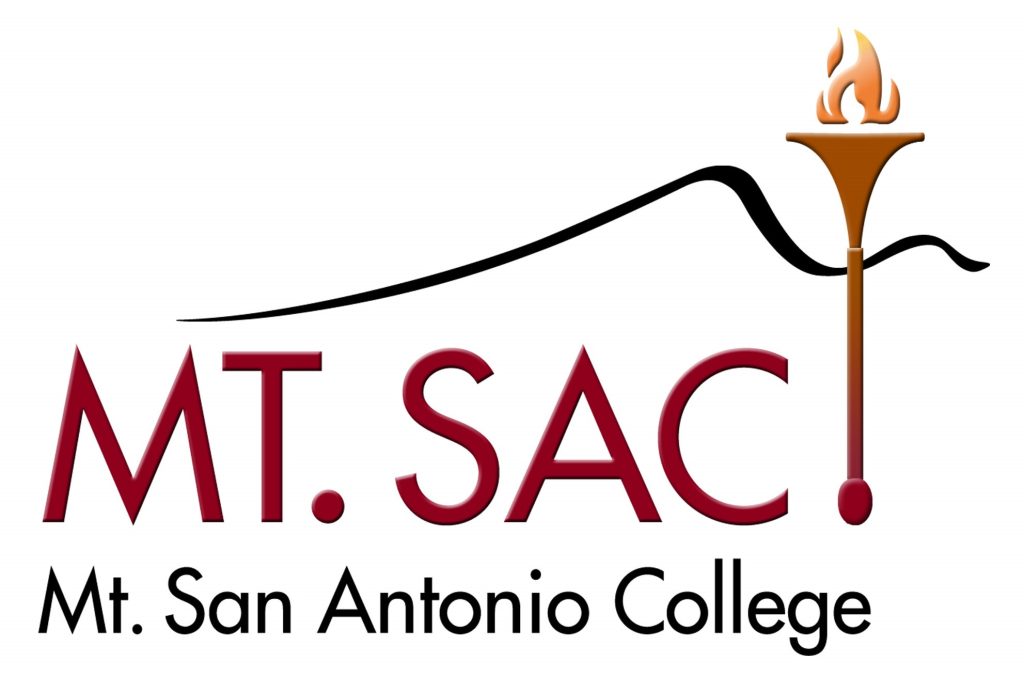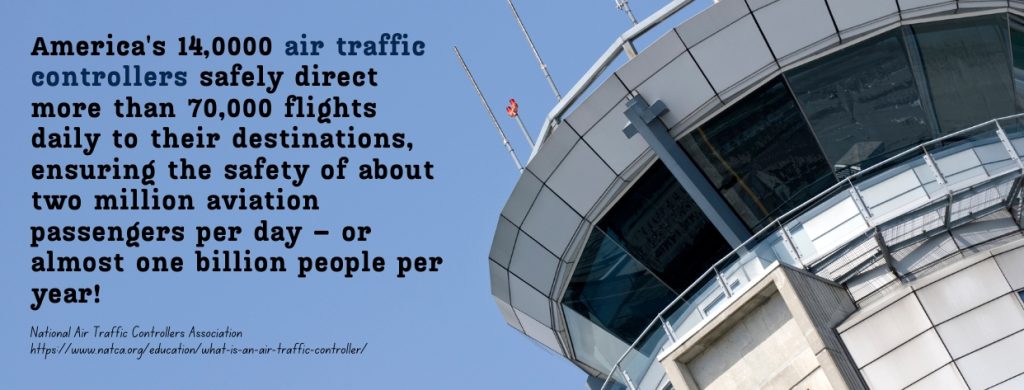Navigating the skies as an air traffic controller is a high-stakes role demanding exceptional skills. These professionals manage high volumes of aircraft, respond swiftly to changing weather conditions and emergencies, and require a keen sense of spatial awareness, strong communication, quick decision-making, and unwavering composure under pressure.
They orchestrate takeoffs, landings, and routes, ensuring aircraft separation and averting disasters, making them indispensable guardians of our skies.
Aspiring air traffic controllers embark on a path that demands unwavering dedication and relentless hard work. Many enroll in apprenticeship programs or attend specialized trade schools to acquire the skills and knowledge necessary for managing the skies effectively while adhering to strict safety protocols.
This intensive training process instills in them the mastery of communication, the finesse of spatial awareness, and the art of rapid decision-making.
In this demanding profession, the unwavering commitment to continual skill refinement isn’t just encouraged—it’s an absolute necessity! It ensures that air traffic controllers possess the competence to effectively manage challenging situations while simultaneously safeguarding the lives of countless people in the vast expanse of airspace.
What is an Air Traffic Controller?
Air traffic controllers are the experts who keep our skies and airports running smoothly and safely. They work in dynamic, high-pressure settings, overseeing the safe and organized movement of aircraft in the air and on the runways.
They’re the ones who make sure planes take off, land, and follow their routes with precision, always prioritizing safety, whether it’s maintaining safe distances between aircraft or swiftly responding to changing weather conditions and unexpected emergencies.
Air traffic controllers rely on sharp spatial awareness, effective communication, quick decision-making, and the ability to remain calm under immense pressure, using sophisticated radar and communication systems to provide precise instructions to pilots.
Their critical role ensures the efficient flow of air traffic while prioritizing safety, making them indispensable for the smooth operation of aviation and the safety of passengers and crew.
Responsibilities of Air Traffic Controllers in Aviation
Staying within these responsibilities is essential to ensure the smooth operation of aviation:
- Aircraft Separation – Controllers maintain safe distances between planes, preventing mid-air collisions.
- Traffic Management – They optimize routes and manage air traffic to minimize congestion and delays.
- Communication – Provide clear instructions to pilots for safe flight operations.
- Weather Monitoring – They monitor weather conditions, providing updates to pilots for informed decision-making.
- Emergency Response – Controllers swiftly coordinate responses to emergencies, ensuring passenger safety.
- Navigation Assistance – They guide pilots, especially in low-visibility or off-course situations.
- Monitoring and Supervision – They monitor aircraft progress and resolve conflicts to maintain safety.
- Training and Certification – Controllers undergo rigorous training to ensure competence in their roles and safety protocols.
Work Environment of an Air Traffic Controller
Air traffic controllers work in various settings, including control towers at airports, where they oversee aircraft movements on runways and taxiways, requiring close coordination with ground personnel and pilots during takeoff and landing.
Furthermore, many controllers operate from radar facilities, where they monitor aircraft in their designated airspace, including en route centers, approach control facilities, and terminal radar approach control (TRACON) facilities.
En route controllers, specifically, operate from secure office buildings located across the country, enabling them to manage aircraft once they depart from airport airspace. Some controllers even work within the entire national airspace, playing a crucial role in preventing traffic congestion and ensuring the readiness of air bases for emergencies.
Air traffic controllers follow a typical work schedule that entails shift work to ensure 24/7 coverage, encompassing days, nights, weekends, and holidays. Controllers typically have shifts that run for up to ten hours, followed by a required nine-hour break before their next shift.
Their work weeks typically span 37 to 40 hours. It’s a dynamic schedule that spans days, nights, weekends, and even holidays, which is crucial to ensure round-the-clock coverage in the demanding world of air traffic control.
Methodology
Selecting the right Air Traffic Controller (ATC) Trade School can significantly impact your future career in aviation. To help you evaluate your options, we put together five of the best trade schools offering the trade program that meet these criteria:
- Delivered in a hybrid format that integrates online learning with hands-on ATC training in simulation facilities or labs using state-of-the-art simulators, radar systems, and other equipment and with access to real-world aviation environments,
- Offers a comprehensive curriculum covering air traffic control, aviation regulations, and safety procedures that fully meet the requirements and adhere to the standards set by aviation authorities,
- Taught by seasoned instructors whose extensive experience in air traffic control provides valuable insights,
- Demonstrates a high job placement rate, indicating that graduates emerge as well-prepared future professionals.
- Offers an array of financial assistance programs like scholarships, grants, and loans,
- Accredited by relevant aviation authorities or educational accrediting bodies, ensuring a top-quality program for its trainees as a prerequisite for ATC certification.
The Importance of Accreditation and Certification
Accreditation and certification are vital for the safety and efficiency of air traffic control (ATC). Air traffic controllers’ training and qualifications are essential to maintain the integrity of the aviation industry. They ensure safety by equipping controllers to handle emergencies and complex scenarios, maintain consistency, optimize traffic flow, and comply with regulations.
In an interconnected aviation landscape, accreditation and certification are key to ensuring the efficiency and safety of air traffic control (ATC) systems. They equip controllers to handle emergencies, maintain standardized practices, optimize traffic flow, comply with regulations, and coordinate international air traffic effectively. These credentials are pivotal in upholding the integrity and reliability of aviation systems worldwide.
List of some of the key accreditations related to air traffic controllers:
- Air Traffic Control License (ATC License) – is issued by the Federal Aviation Administration (FAA)
- Radar Control Certification
- En-Route Control Certification
- Tower Control Certification
- English Language Proficiency Certification
- Continuing Education and Recertification
- International Civil Aviation Organization (ICAO) Certification – While not mandatory in all countries, ICAO sets global standards and recommended practices for air traffic control. Some nations may require their controllers to meet ICAO standards in addition to their national certifications, enhancing international consistency and safety.
5 Best Online Air Traffic Controller Trade Schools
University of Alaska Anchorage

- Location: Anchorage, Alaska
- Online Delivery Method: Online
- Time It Takes to Complete: less than two years
- Completion Rate: 12%
- Types of Aid: Scholarship, Grants, Loans, Federal Work-Study
The University of Alaska Anchorage (UAA) presents a comprehensive Air Traffic Control program, constituting a foundational pedagogical initiative aimed at nurturing the requisite proficiencies essential for prospective careers in aviation.
The curriculum, intrinsically multifaceted, encompasses pivotal subjects such as air traffic management, navigation systems, radar operational procedures, a thorough grounding in aviation regulatory frameworks, and astute emergency protocol management.
A distinctive feature is the program’s experiential facet, employing advanced simulators to engender practical acumen in navigating authentic air traffic control scenarios.
Graduates emanating from UAA’s Air Traffic Control curriculum emerge as adept professionals, steeped in the doctrine of not only operational adeptness but also the paramount commitment to aviation safety.
This program is Northwest Commission on Colleges and Universities (NWCCU)-accredited.
Community College of Baltimore County

- Location: Baltimore County, Maryland
- Online Delivery Method: Online
- Time It Takes to Complete: Program durations can vary from a few months to two years or more
- Completion Rate: 6%
- Types of Aid: Grants, Scholarships, Employment, Loans
The Community College of Baltimore County (CCBC), renowned for its rich tapestry of academic and vocational offerings, stands as a beacon of educational excellence. With a commitment to delivering quality education and fostering diverse career prospects, CCBC serves as a vital institution within its region.
CCBC’s commitment to preparing students for careers in aviation and air traffic management is evident through its Air Traffic Control program. The Air Traffic Control Certificate program offers students a solid foundation in air traffic control operations.
The Air Traffic Control program at the Community College of Baltimore County includes essential courses like:
- “The Air Traffic Control System”
- “Air Traffic Control Operations I”
- “Instrument Pilot Ground School”
- “IFR Flight Operations”
- “Introduction to Meteorology”
Collectively, these courses provide a comprehensive foundation for prospective air traffic controllers, covering both theoretical and practical aspects of the profession. For the most current course details, students are encouraged to visit CCBC’s official website or contact the college directly.
Importantly, it’s crucial to understand that this certificate is not intended to replace the FAA Collegiate Training Initiative (CTI) degree program but rather to substitute it. Upon successful program completion with a GPA of 3.0, students will be awarded the Air Traffic Control Certificate, providing them with a valuable set of essential skills.
These skills include proficiency in applying FAA and National Transportation Safety Board regulations and other relevant aeronautical and security guidelines, all tailored for various aviation and safety settings.
Graduates of this Middle States Commission on Higher Education (MSCHE)-approved are well-prepared to perform crucial air traffic controller duties, particularly in low-density traffic scenarios. They become adept at communicating clearly and decisively using the industry-standard pilot-controller phraseology, ensuring effective and reliable communication in the realm of aviation and safety.
Mt. San Antonio College

- Location: Walnut, California
- Online Delivery Method: Online
- Time It Takes to Complete: 2 years
- Completion Rate: Undisclosed
- Types of Aid: Higher Education Emergency Relief Fund (HEERF)
The Air Traffic Control program at Mt. San Antonio College focuses on providing students with the vital knowledge and skills needed for a career in air traffic control. It encompasses crucial areas such as aviation regulations, air traffic control procedures, effective communication techniques, and radar operation, often incorporating hands-on training.
Usually completed in under two years, this program prepares graduates to meet the FAA’s educational requirements for air traffic controller training. A high school diploma or its equivalent is typically the admission prerequisite, and graduates receive a certification upon completion.
MTSAC’s curriculum aligns with the Federal Aviation Administration’s Air Traffic Collegiate Training Initiative (AT-CTI) requirements. In partnership with the FAA, this CTI program readies students for a wide array of aviation careers.
Completing this CTI program may result in the college recommending students to the FAA for potential employment as air traffic controllers. Notably, there are no specific prerequisites or enrollment limitations, making this an accessible and promising pathway for those interested in this field.
This program is recognized by the Air Traffic — Collegiate Training Initiative (AT-CTI).
Vaughn College of Aeronautics and Technology

- Location: Queens, NY
- Online Delivery Method: Hybrid
- Time It Takes to Complete: typically a few months to one year
- Completion Rate: 45%
- Types of Aid: Scholarships, Grants, Loans, Federal Work Study, Veteran, Short-term assistance fund
Vaughn College of Aeronautics and Technology‘s Air Traffic Control Program stands out as a dynamic and engaging educational experience. With a focus on real-world readiness, students gain practical insights into the world of air traffic control, drawing from the college’s strong aviation heritage.
The program not only imparts the technical aspects but also emphasizes the crucial importance of professionalism and effective communication within this high-pressure environment.
Vaughn University’s air traffic control program is tailored to a diverse student body, spanning both traditional and non-traditional learners. The program comprises ten required air traffic control courses, with the flexibility of online options to meet varied student needs.
However, it’s worth noting that some 30-credit courses necessitate in-person classroom attendance. Beyond air traffic control, students can explore related areas like:
- Airport Management
- Airline Management
- Aircraft Operations
- Electronic Engineering Technology Avionics
- Aviation Maintenance
An essential aspect of their education involves hands-on experience with advanced simulators, faithfully replicating real-world air traffic scenarios to enhance their decision-making skills.
Vaughn provides flexibility in scheduling by offering air traffic control courses during both daytime and evening hours. The program’s primary objective is to be inclusive, serving individuals with varying backgrounds and needs, whether they are newcomers to the field or seasoned industry professionals looking to expand their knowledge.
This flexibility empowers students to choose their courses and complete the program according to their unique schedules and commitments.
Vaughn’s ATC program is approved by the Engineering Accreditation Commission (EAC) of ABET.
Miami Dade College

- Location: Miami, Florida
- Online Delivery Method: Blended
- Time It Takes to Complete: 1 year
- Completion Rate: Undisclosed
- Types of Aid: Free Application for Federal Student Aid (FAFSA), Scholarship, Grants
MDC’s School of Aviation, recognizing the competitive nature of high-paying careers in aviation, provides students with the flexibility to choose from various course delivery methods. Students can opt for traditional in-class, blended, or online formats.
In the traditional setting, they attend physical classrooms with an instructor, while the blended format seamlessly combines both in-class and online learning components.
This approach offers a more versatile educational experience, allowing students to specialize in Aviation Administration, Aviation Maintenance Management, or Professional Pilot Technology and subsequently seize rewarding opportunities within the aviation industry.
Upon graduation, students are equipped with the ability to develop strategies for aviation administration and maintenance, logistics, and management. They will have a broad perspective on global aviation and transportation logistics and demonstrate proficiency in industry operations, governmental regulations, and organizational procedures.
It is a Southern Association of Colleges & Schools Commission on Colleges-approved ATC school.

Frequently Asked Questions About Air Traffic Controller Trade Schools
What is an online air traffic controller trade school?
Online air traffic controller trade schools offer a thorough education for future air traffic controllers. These programs offer a solid foundation, blending theory with hands-on experience and simulation training to equip students for the intricacies of air traffic control.
With a focus on aviation regulations and safety procedures, they prepare students to manage aircraft safely and efficiently within the national airspace system.
Is online training suitable for becoming an air traffic controller?
Online training provides a strong start in understanding air traffic control principles, but this field thrives on hands-on experience. The unique blend of online and in-person training enables students to translate theory into real-world practice.
They learn how to master radar systems and finesse their communication and decision-making skills with the guidance of experienced mentors, making it a dynamic and engaging journey into the world of air traffic control.
What are the prerequisites for enrolling in an online air traffic controller trade school?
Prerequisites differ, but most programs require a high school diploma or equivalent. Some programs also specify age and citizenship requirements, aligning with regulatory standards crucial for aspiring air traffic controllers to ensure aviation safety.
What subjects are covered in online air traffic controller trade school programs?
In general, these programs encompass a broad spectrum of crucial subjects essential for aspiring air traffic controllers. Students can expect to delve into areas such as aviation regulations to ensure they understand the legal framework guiding their profession.
They also gain proficiency in radar operation, which is integral to tracking and managing aircraft in the airspace.
What certifications can I earn through an online air traffic controller trade school?
Air Traffic Controller training graduates become eligible for various certifications, with one of the most highly sought-after being the Federal Aviation Administration’s (FAA) Air Traffic Control Specialist Certificate.
This certification signifies a substantial professional milestone and serves as a crucial qualification that opens the doors for them to embark on fulfilling careers as air traffic controllers.
Can I become an air traffic controller with only online training?
While online training is valuable for building a solid understanding of air traffic control principles, candidates typically must complement this with in-person training and testing facilitated by FAA-approved facilities to meet the rigorous standards of the profession.
Can I pursue a career as an air traffic controller immediately after completing an online program?
Finishing an online program is usually just the initial stage; candidates frequently have to go through further FAA training and successfully navigate a rigorous selection procedure. This involves evaluations and practical assessments to ensure they meet the stringent requirements of air traffic control.
Are there age restrictions for air traffic controller training?
Yes, there are often age restrictions, typically requiring candidates to begin training before a certain age, such as 31 or 35.
Can international students enroll in online air traffic controller trade schools?
Some schools accept international students, but certain additional requirements related to visas and citizenship will have to be met by the applicant.
Do I need prior aviation experience to enroll in an online air traffic controller trade school?
While prior aviation experience can be a plus, it’s not a must. These training programs are welcoming to individuals from diverse backgrounds, regardless of whether they have any prior experience in aviation.
Do I need a degree to pursue a career as an air traffic controller?
Candidates are required to have either three years of work experience, a bachelor’s degree, or a combination of post-secondary degree and work experience totaling three years as per the FAA’s aviation careers guidelines.
For more valuable information, see the following:

